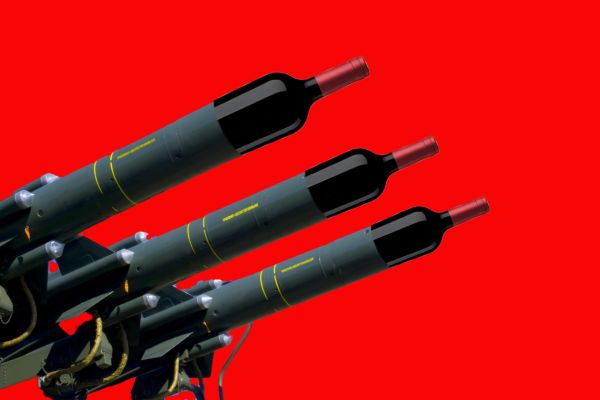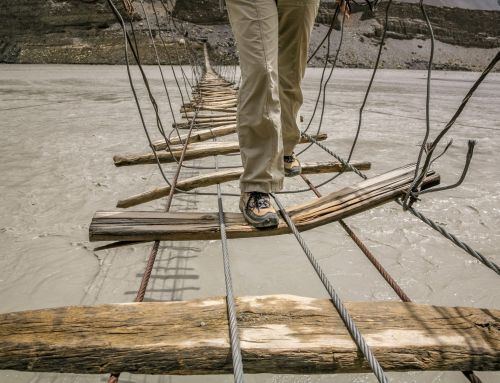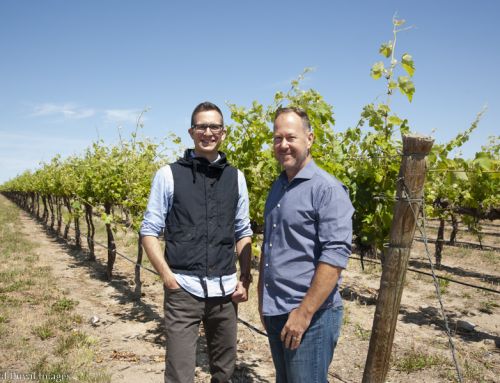 Tasting rooms are now part bar, part coffee shop, part restaurant, and part activities center. Where is it all going, and is it sustainable?
Tasting rooms are now part bar, part coffee shop, part restaurant, and part activities center. Where is it all going, and is it sustainable?
In days not long ago, a tasting room experience typically consisted of someone standing behind a bar – or perhaps two barrels with a plank between them – and pouring a flight of wines. They answered questions, guests purchased wines (or not), and then went on their way. Those days are largely over.
“That come in and taste five wines, it’s dead,” says Morgan Lee, co-owner and winemaker at Two Vintners in Woodinville. “Let’s just be honest, it’s not that exciting.”
Today wineries and tasting rooms are offering everything from live music to food and wine pairings, comedy nights, open mic nights, trivia nights nights, bingo, book clubs, and more in an ever-growing arms race to bring in guests.
“Making great wine is the bar now”
The evolution of tasting rooms perhaps started when wineries began offering wine by the glass and bottle instead of just tastings. Guests were encouraged to linger and to return with greater frequency. Experience and atmosphere became paramount, with tasting rooms becoming, in essence, wine bars.
The addition of food was the next step. Traditionally, people needed to leave tasting rooms to eat. Then some wineries started bringing in food trucks. Next were pre-packaged options. Then small plates. Some wineries have gone so far as to open full-fledged restaurants on site.
The pandemic accelerated these changes, as food became a requirement. Along the way, who started coming to tasting rooms, why, and how often fundamentally changed.
“It used to be you come in, try the wine, you like it, you buy it, you move on to the next place,” says Mari Womack, owner and winemaker at Damsel Cellars in Woodinville. “We’ve conditioned the customer to expect something totally different now.”
That something different might also have very little to do with wine. At best, the wine is often secondary.
“We’re very proud of the wines, but just having great wines does not bring people in,” says Lee. “Making great wine is the bar now.”
“The whole business is different”
Liz Moss-Woerman, director of hospitality at Barnard Griffin in Richland, Washington, has been working at the winery since 2009. Several years back, she asked members why they were in the wine club.
“Wine was certainly up there, in the top three or five, but it was also what they got to do. That was a shocking realization for me.”
In March alone at its various tasting rooms, Barnard Griffin is offering live music, a trivia night, a wreath-making workshop, a felting class, a celebrity rosé class, and an Easter candy wine pairing event.
“We try a lot of things,” Moss-Woerman says. “A lot of it is throwing spaghetti at the wall, seeing if it sticks.”
Barnard Griffin opened a restaurant at its Richland location in 2012. Moss-Woerman says it led to a fundamental shift.
“Suddenly, we had a lot more space that we felt we needed to fill with either things or people. We also had more staff at our disposal.”
Barnard Griffin subsequently shuttered the restaurant during the pandemic and decided not to reopen it. Moss-Woerman says wineries offering food presents challenges.
“It’s so hard. The whole business is different.”
“It’s almost a race to get eyeballs and butts in seats”
What is driving these changes? In part, it’s the evolution of the wine industry.
“40 years ago, the fact that people were making wine was the fun thing,” Moss-Woerman says. “Then it became making good wine. Now there’s a lot of good wine, so how do you differentiate yourself further?”
Washington alone has gone from fewer than 100 wineries 25 years ago to nearly 1,100 today. Wineries need a way to separate themselves beyond the wine and, more recently, the atmosphere.
Escalating rent has also driven changes. As the price per square foot in places like Woodinville soars, wineries have a financial imperative to keep the space brimming with people.
“It’s almost a race to get eyeballs and butts in seats,” says Womack. “Everybody’s doing trivia night. Everybody’s got live music. Everyone has a restaurant now or has some kind of food offering.”
Over time, this has a snowball effect. “The more some of us do, the more other people have to do to compete,” Moss-Woerman says. “That can be exhausting.”
“Everybody wants new all the time”
The challenges exist for new wineries and tasting rooms too. They need a way to grab attention in a competitive environment.
“At our new Ellensburg location we definitely have a wide-range of activities,” says Emily Fergestrom, owner of Yakima Valley’s Fortuity Cellars. Fortuity’s Ellensburg tasting room offers live music, open mic poetry, a silent book club, bingo, art activities, a “Girls Night Out,” and a Monday happy hour. “At the Yakima Valley winery, we keep events focused on marquee tourism weekends, community givebacks, and new wine releases,” Fergestrom says.
New wineries surely benefit from an initial pop of excitement. Then they quickly become one of a thousand wineries needing ways to compete.
“When I first started Two Vintners, we were full all the time because it was a new thing,” Lee says. “Now everybody wants new all the time.”
COVID surely turbo-charged tasting room changes. Almost overnight, seated tastings went from a rarity in Washington to the norm. The 30-60 minutes (at best) that people might spend tasting has been stretched out to an hour and a half to two hours. The pandemic also brought more subtle changes.
“During COVID, we weren’t allowed to do anything,” Moss-Woerman says. “Since we’ve come out the other side, there has been an extra focus on what we can do.”
“If it’s not about the wine, what are we all doing here?”
Running a winery has never been an easy venture, despite many people’s romantic visions. Owners of small wineries wear the hats of winemaker, marketer, salesperson, bookkeeper, janitor, compliance officer, and many more. Recent changes have added waiter, restaurateur, and activities coordinator. It makes the job that much harder.
“In one way, it’s exciting, and, in another way, it’s sad,” says Lee. “Some people still just want the tasting experience, but, by and large, people want something extra.”
At the very least, these changes represent a fundamental shift. Surely something has been gained. The tasting room experience is richer and more varied. However, something has also been lost.
“All of these different trends and all of these different outside pressures are really making it somewhat unsustainable, in my opinion, to be just a winery, which is a little disheartening,” Womack says. “I don’t know how to un-ring that bell.”
There is also a question of where the tasting room arms race leads. One can easily imagine part of the winery as tasting bar, another as restaurant, another as club, yet another as coffee shop, and still another as performance theater.
If that comes to pass, the business model for wineries will be completely different than it has been. It already is. It’s also quite possible that, even with all of those offerings, customers will soon continue on elsewhere in an endless search for the next new thing.
Womack, for one, is pushing back. She says she’s leaning into the importance of her wine and focusing on building brand loyalty because of it.
“I mean, if it’s not about the wine, what are we all doing here?”
Northwest Wine Report is wholly subscriber funded. Please subscribe to support continued independent content and reviews on this site. It is the only way that the site will be able to continue.
To receive articles via email, click here.







I can remember way back in the day when tastings were free; wineries just wanted people in the door. Now it’s a whole (expensive) experience just to taste wine.
I miss the days of going to Napa and tasting wines on a plank between two barrels with winemakers like Nils Venge and others. Give me that intimacy over all these so-called frills any day.
One of my favorite early memories of traveling to Walla Walla was going to Walla Walla Vintners for a release event. Gordy and Myles were behind a plank held up by two barrels. Another barrel in the production space had order forms. Another one had Cougar Gold cheese crumbles with a cup for new toothpicks and disposed toothpicks.
“I mean, if it’s not about the wine, what are we all doing here?” That says it all for me. Like others here, I miss the “good old days”. Tasting for no charge, chatting with the winemaker or winery employee, buying the best wines they had to offer (or the ones I could afford), and creating some lifelong memories. First time I visited Walla Walla in the early 80’s, there were four wineries: Leonetti, Woodward Canyon, L’Ecole and Patrick M. Paul. Those were the best days for me.
Great article and relevant to all tasting rooms. Like others, many of my best wine-tasting memories have to do with great wine in a “real” and intimate environment. However, there seems to be no question the wine industry is in a state of change with changing drinking habits and generational differences in attitudes about wines. I believe in the importance of experiences, but as a smaller winery, I confess this trend feels like one more difficult barrier to overcome. All these trends may sound fun to many, but they require investments and resources that many in the business will struggle to provide.
It is important to keep in mind that the tasting room is one facet of the business. There is an increased focus there, or arms race, for those that only focus in the DTC channel. As you grow and bring more people to Washington Wine, then you need to be thinking about how you can be relevant in distribution. That is a whole different battle of price/value/brand that more and more happens in a retail environment. Battling there in other states helps bring visibility to WA wine and its DTC tourism. Let’s all bring the fight out of state to win more in state.
Like many above, I yearn for the “good old days.” Being raised in the Yakima Valley, I was introduced to wine tasting fairly early on and most loved the tasting rooms into which we could just walk, no appointment necessary, belly up to the tasting bar, be handed a sheet of what was open, and taste at our own pace. I wish that was still more of an option even in places like Woodinville. I don’t necessarily want to be sat down at a table and served a flight. I might want chit-chat with the person pouring, not treated by a server as if I’m at a restaurant.
I acknowledge: if we’re subscribing to a site like this one, we’re like either wine enthusiasts or in the business or both. Tasting rooms, by and large, don’t cater to us and make decisions based on what we, the minority want. If I was in the business, I probably wouldn’t either (at least exclusively) because, let’s face it, a business needs to make money and the “masses” want these new tasting room options.